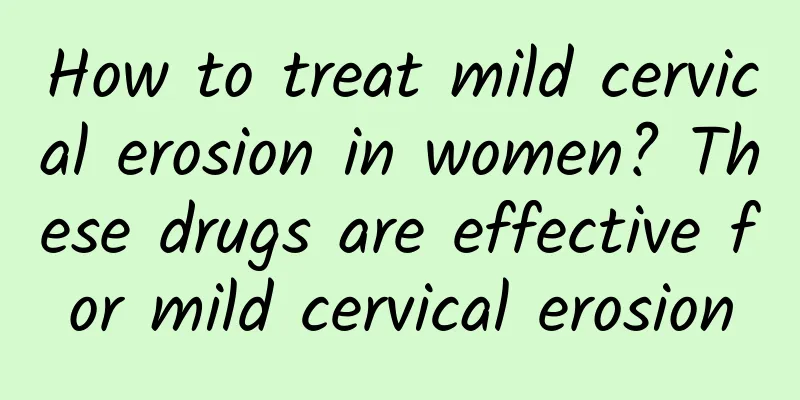What are multiple ovarian cysts and what are their symptoms

|
What are multiple ovarian cysts? What are the symptoms? Polycystic ovarian disease is caused by hypothalamus-pituitary-ovarian axis dysfunction that disrupts interdependence and regulation, so the ovaries cannot ovulate for a long time. Polycystic ovarian disease may lead to infertility because the patient cannot ovulate for a long time. Timely understanding of the condition can effectively treat it. The symptoms of multiple ovarian cysts mainly include the following aspects: 1. Discomfort in the lower abdomen: Due to the weight of the tumor itself and the influence of intestinal peristalsis and posture changes, the initial symptoms before the patient touches the lower abdominal mass cause the tumor to move in the pelvic cavity, involving its pedicle and pelvic infundibulum ligament, causing the patient to feel swelling and drop in the lower abdomen or bone fossa. 2. Increased abdominal circumference and abdominal mass: This is the most common phenomenon. The patient notices an increase in the size of the abdomen, or occasionally feels bloated and uncomfortable in the morning, so he presses the abdomen and finds a mass in the abdomen. 3. Abdominal pain: If the tumor has no complications, the pain is rare. Patients with ovarian tumors feel abdominal pain, especially those who have sudden onset, which is mainly caused by cyst pedicle torsion, tumor rupture, bleeding or infection. Malignant cysts often cause abdominal pain and leg pain, often requiring patients to go to the emergency room. 4. Menstrual disorders: Generally, ovarian or even bilateral ovarian cysts do not destroy all normal ovarian tissues and do not cause menstrual disorders. Some uterine bleeding does not belong to endocrine. It is because ovarian tumors change the distribution of pelvic blood vessels and cause endometrial congestion; or because ovarian malignant tumors directly metastasize to the endometrium, menstrual disorders are often combined with other secretory influences. 5. Compression symptoms: Large cysts can compress the area near the bladder, causing frequent urination and difficulty urinating. Huge ovarian tumors can cause dyspnea and palpitations, and ovarian tumors with a lot of ascites can also cause this symptom. 6. Infertility: The ovaries are where the eggs develop, mature, and are discharged. If the follicles at different stages of the ovarian cortex are damaged by cysts, the development, maturation, and discharge of the eggs will be impaired, which will lead to infertility. |
<<: At what age do women reach menopause?
>>: What should I do if there are blood clots during menstruation that cannot be discharged?
Recommend
What are the symptoms of menopause?
Menopause is a common gynecological disease. Expe...
Are you eating endless amounts of Buddha Jumps Over the Wall and Dongpo Pork during the New Year gathering? Obesity follows! Nutritionists teach you 4 tips to avoid eating fat during the Chinese New Year and stay healthy without any burden
The Lunar New Year is here, and eating New Year&#...
How to prevent dysmenorrhea in winter?
The weather is cold in winter, and the number of ...
What are the dangers of pelvic inflammatory disease in women?
What are the hazards of female pelvic inflammator...
What foods can't be eaten by people with uterine fibroids?
What kind of food can't be eaten by people wi...
Is uterine fluid accumulation during pregnancy serious?
Is uterine effusion serious during pregnancy? The...
What you should pay attention to in your diet after abortion
Abortion itself is a very strenuous operation, so...
Clinical diagnosis of cervical condyloma infection
Nowadays, people's sexual concepts are becomi...
Eat the right starch to lose weight! Handmade high-fiber soup cubes
According to European research, eating high-prote...
Will an ovarian cyst rupture? What are the symptoms of an ovarian cyst?
Can an ovarian cyst rupture? What other symptoms ...
What are the symptoms of uterine fibroids? What are the common manifestations of uterine fibroids?
Women should be familiar with diseases such as ut...
What is the main cause of cervicitis?
Among gynecological diseases, cervicitis is also ...
Regulating dysmenorrhea with herbal tea
Many female friends have experienced dysmenorrhea...
Analysis of several common causes of vulvar leukoplakia
As a common gynecological disease, the cause of v...
Dietary considerations for patients with hyperprolactinemia
After many women suffer from hyperprolactinemia, ...









